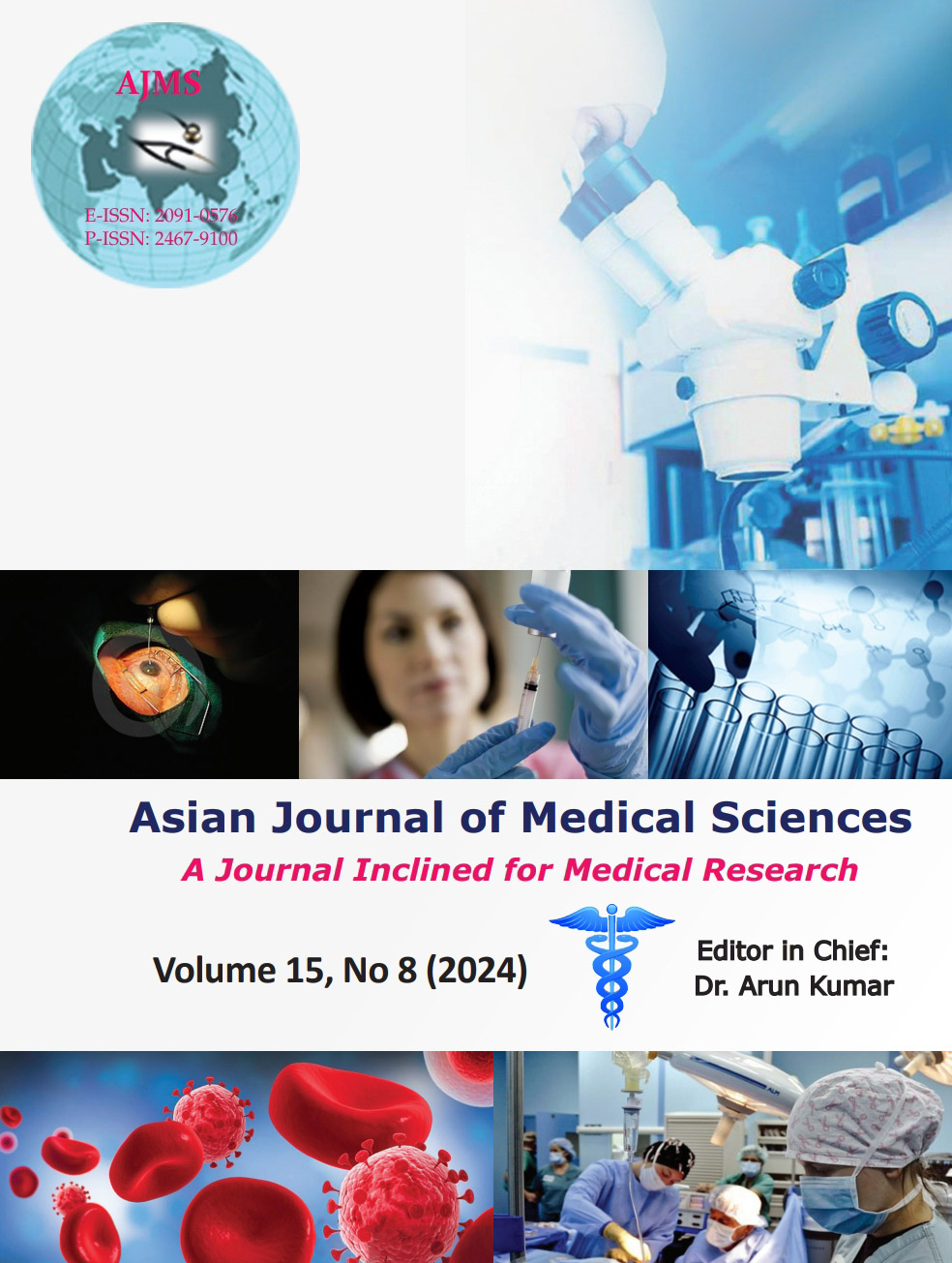Comparison of nebulization with lignocaine and dexamethasone for attenuation of post-operative sore throat: A randomized controlled trial
Keywords:
Post-operative sore throat; Lignocaine; Nebulization; Dexamethasone; Post-operative sore throatAbstract
Background: Post-operative sore throat (POST) is a very common anesthesia-related event which may hamper patient satisfaction and increase treatment cost.
Aims and Objectives: This study aimed to compare the effectiveness of nebulization with dexamethasone and lignocaine to prevent POST.
Materials and Methods: This randomized controlled study involved 135 patients randomly divided into three equal groups: Group D – (n=45) received 8 mg (2 mL) dexamethasone plus 3 mL of distilled water, Group L – (n=45) received 80 mg (4% lignocaine 2 mL) plus 3 mL distilled, and Group S – (n=45) received nebulization with 5 mL normal saline.
Results: At 4 h postoperatively, the incidence of POST was 15.6% in the dexamethasone group, 33.3% in the lignocaine group, and 73.3% in the saline group. The score was significantly higher in the saline group (P=0.001) compared to the dexamethasone and lignocaine group, while it was comparable between dexamethasone and lignocaine group (P=0.188). Similarly, dexamethasone and lignocaine groups were comparable at immediately post-operative, 2, 8, 12, and 24 h post-operative time points. Post-operative hoarseness scores of all three groups were comparable at all-time points. A significant increase in the heart rate (HR) and mean arterial pressure (MAP) after intubation was observed in the saline and dexamethasone group as compared to the lignocaine group (P=0.001) while HR and MAP were comparable in dexamethasone and saline group (P=1.000).
Conclusion: Dexamethasone and lignocaine nebulization are both effective and comparable prophylaxis for POST and lignocaine nebulization has added advantage of blunting pressor response to endotracheal intubation over dexamethasone nebulization.
Downloads
Downloads
Published
How to Cite
Issue
Section
License
Copyright (c) 2024 Asian Journal of Medical Sciences

This work is licensed under a Creative Commons Attribution-NonCommercial 4.0 International License.
Authors who publish with this journal agree to the following terms:
- The journal holds copyright and publishes the work under a Creative Commons CC-BY-NC license that permits use, distribution and reprduction in any medium, provided the original work is properly cited and is not used for commercial purposes. The journal should be recognised as the original publisher of this work.
- Authors are able to enter into separate, additional contractual arrangements for the non-exclusive distribution of the journal's published version of the work (e.g., post it to an institutional repository or publish it in a book), with an acknowledgement of its initial publication in this journal.
- Authors are permitted and encouraged to post their work online (e.g., in institutional repositories or on their website) prior to and during the submission process, as it can lead to productive exchanges, as well as earlier and greater citation of published work (See The Effect of Open Access).




